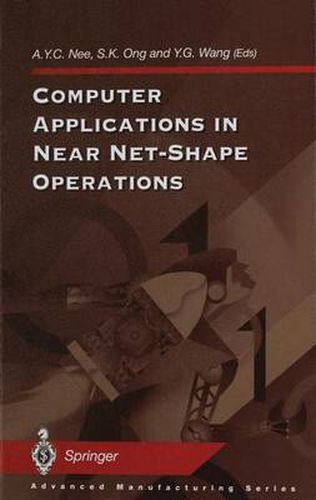Readings Newsletter
Become a Readings Member to make your shopping experience even easier.
Sign in or sign up for free!
You’re not far away from qualifying for FREE standard shipping within Australia
You’ve qualified for FREE standard shipping within Australia
The cart is loading…






This title is printed to order. This book may have been self-published. If so, we cannot guarantee the quality of the content. In the main most books will have gone through the editing process however some may not. We therefore suggest that you be aware of this before ordering this book. If in doubt check either the author or publisher’s details as we are unable to accept any returns unless they are faulty. Please contact us if you have any questions.
Having edited Journal of Materials Processing Technology (previously entitled Journal of Mechanical Working Technology ) for close on 25 years, I have seen the many dramatic changes that have occurred in the materials processing field. Long gone are the days when the only materials processing carried out was virtually the forming of conventional metals and alloys, and when the development of a new product or process in a great number of cases called for several months of repetitive trial-and-error,‘ with many (mostly intuition- or experience-based) expensive and time-consuming modifications being made to the dies, until success was achieved. Even when a 'successful’ product was formed, its mechanical properties, in terms of springback and dimensional accuracy, thickness variations, residual stresses, surface finish, etc. , remained to be determined. Bulk-forming operations usually required expensive machining to be carried out on the product to impart the required dimensional accuracy and surface fmish. Over the years, the experience-based craft of metal forming has given way to the science of materials processing. With the use of the computer, forming operations can be simulated with accuracy, to determine the best forming route and the associated forming loads and die stresses, and to predict the mechanical properties of the formed product, even down to its surface texture.
$9.00 standard shipping within Australia
FREE standard shipping within Australia for orders over $100.00
Express & International shipping calculated at checkout
This title is printed to order. This book may have been self-published. If so, we cannot guarantee the quality of the content. In the main most books will have gone through the editing process however some may not. We therefore suggest that you be aware of this before ordering this book. If in doubt check either the author or publisher’s details as we are unable to accept any returns unless they are faulty. Please contact us if you have any questions.
Having edited Journal of Materials Processing Technology (previously entitled Journal of Mechanical Working Technology ) for close on 25 years, I have seen the many dramatic changes that have occurred in the materials processing field. Long gone are the days when the only materials processing carried out was virtually the forming of conventional metals and alloys, and when the development of a new product or process in a great number of cases called for several months of repetitive trial-and-error,‘ with many (mostly intuition- or experience-based) expensive and time-consuming modifications being made to the dies, until success was achieved. Even when a 'successful’ product was formed, its mechanical properties, in terms of springback and dimensional accuracy, thickness variations, residual stresses, surface finish, etc. , remained to be determined. Bulk-forming operations usually required expensive machining to be carried out on the product to impart the required dimensional accuracy and surface fmish. Over the years, the experience-based craft of metal forming has given way to the science of materials processing. With the use of the computer, forming operations can be simulated with accuracy, to determine the best forming route and the associated forming loads and die stresses, and to predict the mechanical properties of the formed product, even down to its surface texture.